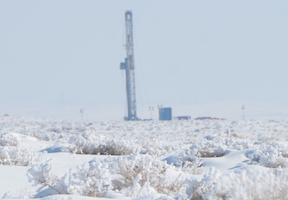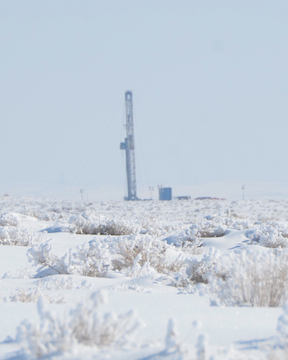A new study explains the mechanism by which ground-level ozone pollution peaks during winter in oil and gas producing regions. Winter ozone pollution is hard to explain because the summer sunlight is normally needed to spark the chemical reactions that create ground-level ozone.
The authors analyzed the chemical reactions happening in the atmosphere during winter in northeastern Utah where the petroleum industry has boomed in recent years.
The researchers found that if levels of volatile organic compounds (VOCs) build high enough in the atmosphere then they can trigger pollution-forming reactions themselves, without help from the sun. Almost all (97 per cent) of the VOCs emitted come from petroleum activities.
Original research paper published in the journal Nature on October 1 , 2014.
Names and affiliations of selected authors



